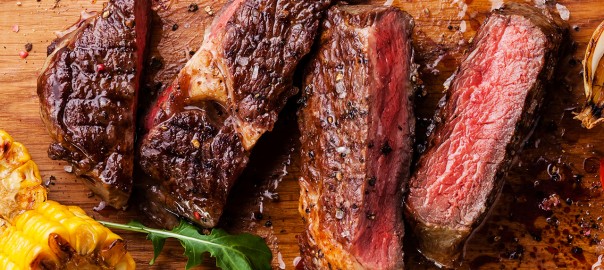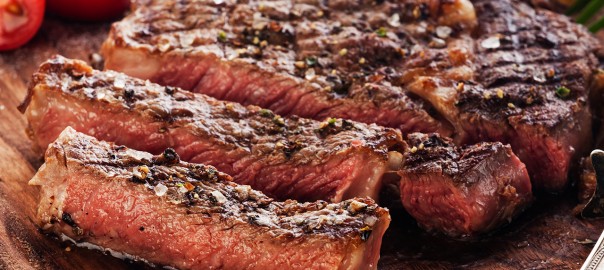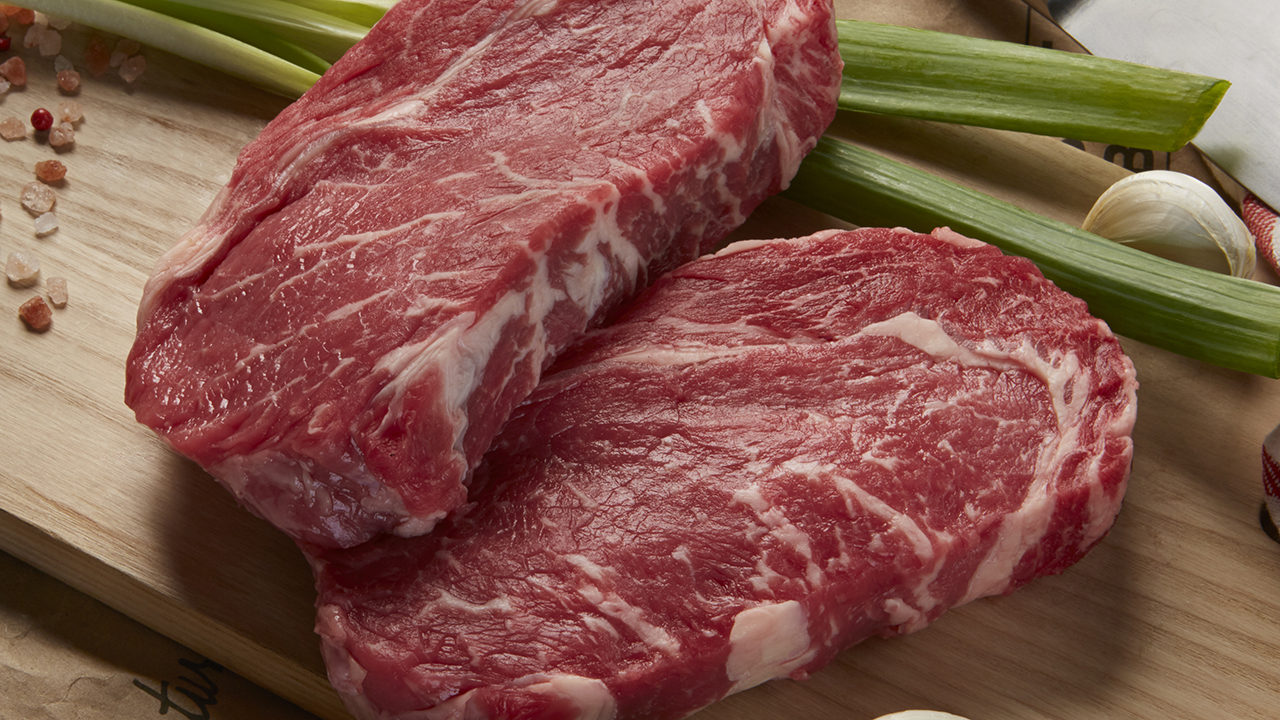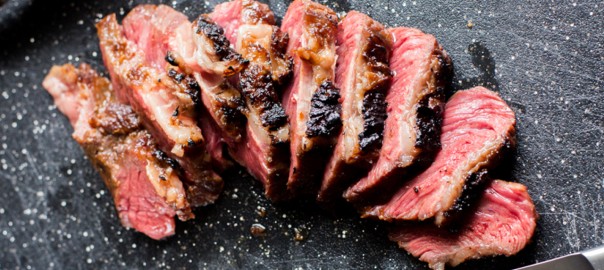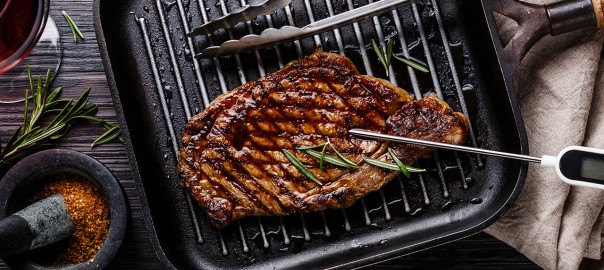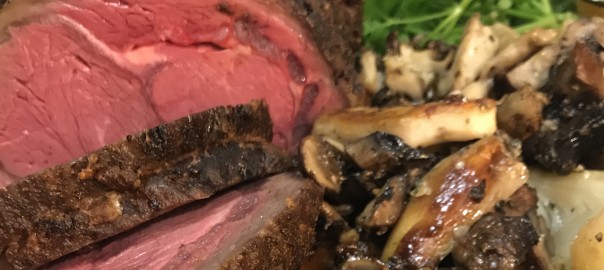Winter is slowly receding here in the Northeast, and it seems as if we’ve — finally — come to the end of a period of strange, colder-than-usual weather across the country. The Masters Tournament has come and gone. The selection of foods at farmers markets is more robust. Scarves, beanies, and mittens will soon be packed away.
And, most importantly, grills will reappear. They will be cleaned, repaired, and lit once more as we undertake that yearly rite of spring — cooking outside.
In our opinion, there is nothing that compares to the experience of throwing a scrumptious hunk of grass-fed beef over some hot charcoals or onto a red-hot grill.
But which beef cuts are best for cooking out? One section of the cow that has long been overlooked is the chuck, especially compared to the filet mignons, ribeyes, strip steaks, t-bone steaks, and tri-tips that come from the middle areas that make up the rib, loin, tenderloin, and sirloin primal cuts.
As our ButcherBox Head Chef Yankel Polak says, “The chuck is a goldmine of great cuts.”
Some of the best cuts of beef to cook outdoors come from the chuck; also, some of our favorite steaks and roasts, in general, are chuck beef cuts.
You already know chuck beef
The “chuck” primal section produces the vast amount of meat that is used from a cow. Most of the meat from this area — the front section from the shoulder blade and down to the leg muscles — lacks fat and has a ton of connective tissue. Therefore, it can result in tough cuts of meat if cooked incorrectly.
Most parts of the chuck close to the ribs are used for various roasts.
Beef chuck roast, for example, is ideal for braising and slow cooking. Other common roast beef cuts from the chuck include pot roast and bone-in chuck roast, also known as the 7 bone chuck roast. These roast sections are fantastic when quickly seared and then put in a slow cooker for a few hours, especially with some complementary seasonings and spices.
These cuts are large and used for braising mainly because it is easy to cut sizeable hunks of beef out of the chuck section, but also because the connective tissue caused by the overuse of the muscles don’t make them as tender and marbled as sirloin steaks and tenderloin steaks.
However, many of the standard — sometimes vaguely labeled — steaks you can get at the supermarket are likely to be steaks cut from the chuck. Like flank steaks or skirt steaks, chuck is also often used as stew meat, kabobs, and sandwich steaks, and as an alternative to more expensive cuts like sirloin tips, tip roast, and ribeye.
You likely cook chuck meat on your grill quite often without realizing it: Chuck meat is one of the primary sources that butchers use to make ground beef. So if you are cooking cheeseburgers for the family this weekend, there is a good chance you’ve got some ground chuck in the burger mix.

New beef cuts from the chuck primal
Because chuck beef has primarily been used for braising roast cuts, cheaper cuts of steak, and ground beef in the past, some steak lovers believe that you can’t find quality steaks in this front section of the cow.
However, over the past few decades, the beef industry has innovated and uncovered tasty, tender steaks in the chuck section that were previously unknown, difficult to access, or more prevalently used in unique ways in other cultures.
For instance, as part of the Beef Checkoff Program, meat science researchers at the University of Florida and the University of Nebraska identified new and potentially more affordable tender cuts of meat. The project led to the discovery of little-used or unknown cuts, like the Denver steak.
The Denver steak — which does not officially have anything to do with the Mile High City — comes from the chuck flap, an area of the chuck under blade that is full of tough, connective tissue. This steak is delicious as long as it is cooked correctly and, as we’ve said again and again with these types of cuts, must be cut against the grain once cooked.
The beef industry research project also led to the discovery of the flat iron steak, which is a challenging cut to find from the top section of the chuck shoulder. Flat iron steak is a perfect grilling steak; it is tender and tasty when cooked on an open fire. However, it can easily become tough if overcooked. Similar to many other cuts with lots of connective tissue — like the Denver steak — it should also be sliced against the grain.
The Denver steak and flat iron steak aren’t the only great grilling cuts that come from the chuck. Additionally, the chuck eye steak comes from an area of the chuck that is part of the longissimus dorsi muscle, the same place where the ribeye steak is derived. There is some confusion about whether or not a chuck eye is also a Delmonico steak, but that is a subject for another day.
The most delicious of all the chuck cuts might be a surprise
Although it sounds like it should come entirely from the ribs primal, the best short ribs come from the chuck. The first few ribs of a cow — usually the second through fifth ribs — are where the serratus ventralis muscle is thickest. This area is in the chuck primal section. The meat in this section is often tough, which is why short ribs are best cooked over a long period of time with a good marinade or rub.
Culturally, short ribs have been prominent in East Asian and Middle Eastern cooking traditions. However, they have emerged more recently as a delectable treat in the U.S. and can be cooked in a number of ways.
Chef Yankel describes short ribs as “the kings of the braising cuts.” We love slow cooking them bone-in with a sweet marinade.
“Short ribs are packed with healthy fats and collagen,” Chef Yankel added. “Nothing compares for texture and flavor.”
Many of the chuck cuts mentioned above are featured in our monthly grass-fed beef ButcherBox — if you are a member, you’ve likely experienced some of these steaks and roasts. If you want some more on our favorite cooking methods and recipes for the different cuts of chuck mentioned, check out our recipe page or YouTube channel.
If you aren’t a member and would like to become a ButcherBox member with delicious, thoughtfully-raised grass-fed beef delivered to your door each month, click here.






